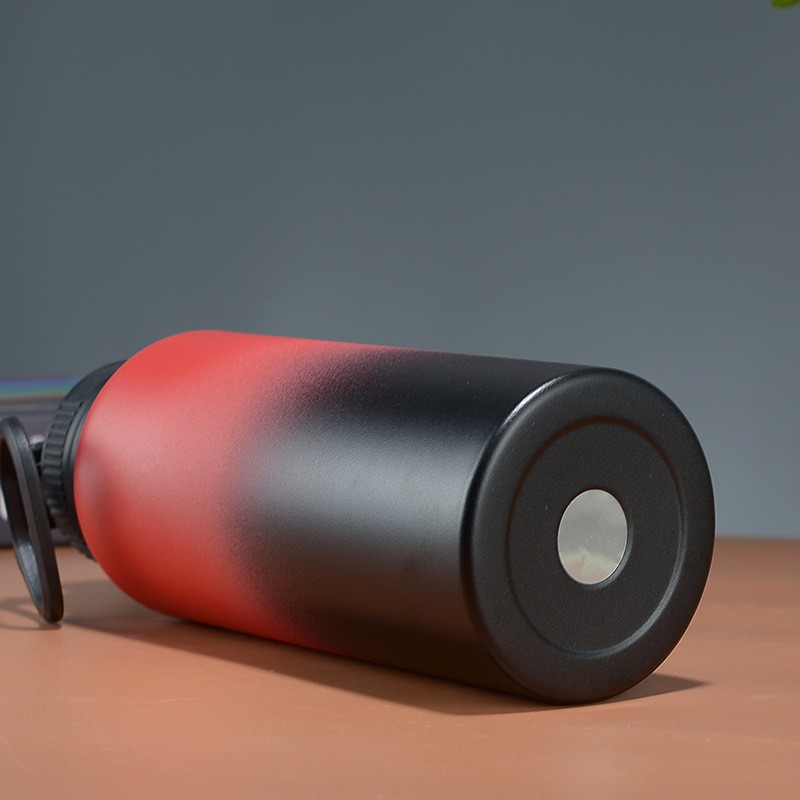A vacuum flask, also known as a thermos, is a useful and versatile tool for keeping beverages and food at the desired temperature. It works by creating a vacuum between two layers of material, which minimizes heat transfer and keeps the contents hot or cold for an extended period of time. While vacuum flasks are great for storing a wide variety of liquids and foods, there are certain items that should not be put in a vacuum flask due to safety and practicality concerns.

One of the most important things to avoid putting in a vacuum flask is carbonated beverages. Carbonated drinks, such as soda or sparkling water, can build up pressure inside the flask as the carbon dioxide gas is released from the liquid. This pressure can potentially cause the flask to leak or even explode, posing a serious safety risk. It is best to avoid putting carbonated beverages in a vacuum flask and opt for non-carbonated drinks instead.
Another item to avoid putting in a vacuum flask is dairy products, particularly those that are not properly sealed or stored at the correct temperature. Milk, yogurt, and other dairy items can spoil quickly if not kept at the appropriate temperature, and a vacuum flask may not provide adequate insulation to keep these products safe for consumption. Additionally, dairy products can leave behind residue and odors that are difficult to remove from the flask, affecting the taste and quality of other items stored in it.
It is also not recommended to put dry ice or liquid nitrogen in a vacuum flask. These substances are extremely cold and can cause the inner lining of the flask to crack or shatter due to the rapid temperature change. Additionally, the extreme cold can cause the materials of the flask to become brittle and lose their insulating properties over time. It is best to use specialized containers designed for storing dry ice or liquid nitrogen instead of a vacuum flask.
- Why does a vacuum flask keep food hot?
- Why does a vacuum flask have a plastic lid?
- Can you put boiling water in a vacuum flask?
- Can I put coffee in a vacuum flask?The Benefits of Using a Vacuum Flask for Coffee.
- Are vacuum flasks safe?
- Why do we need a vacuum flask at home?
- What should you not put in a vacuum flask?
- Is it safe to drink water from vacuum flask?
- What is a stainless steel insulated vacuum flask used for?
- Are you looking for an insulated water bottle to keep your drinks cold?
- China stainless steel insulated vacuum flask factory
- Welcome to CunGoo Tumbler
- CunGoo Flask
- CunGoo produce stainless steel vacuum flask and water bottles
- Cos’è una beuta termica isolata? La bottiglia d’acqua isolata sotto vuoto CUNGOO può mantenere l’acqua ghiacciata fredda e l’acqua calda calda.
- What is an insulated vacuum flask? CUNGOO vacuum insulated water bottle can keep ice water cold and hot water hot.
- Best stainless steel wine cups
- what kind of material is the best for drinkware?
- what is stainless steel vacuum flask ?
- Stainless steel insulated bottles are designed to keep beverages hot or cold for extended periods
- customize your own logo or pattern on the water bottle #vacuumflask
- Stainless Steel Vacuum Flask: A Must-Have for Every Household
- What is vacuum flask?Vacuum Flask: The Ultimate Insulated Container
- What is the best vacuum flask?
- Best stainless steel vacuum
Furthermore, acidic or alkaline substances should be avoided in a vacuum flask, as they can corrode the inner lining and affect the integrity of the materials. This includes items such as citrus juices, vinegar-based dressings, and strong alkaline solutions. These substances can react with the materials of the flask, leading to potential damage and contamination of the contents.
In addition to specific items, it is important to avoid putting anything in a vacuum flask that is too hot or too cold for the intended use of the flask. For example, boiling hot liquids can cause excessive pressure buildup inside the flask, while extremely cold items can compromise the insulation and lead to condensation or frost forming on the exterior. It is best to allow hot liquids to cool slightly before pouring them into the flask, and to avoid storing items that are at an extreme temperature range.
In conclusion, while vacuum flasks are excellent for maintaining the temperature of a wide range of beverages and foods, there are certain items that should not be put in them. Carbonated beverages, dairy products, dry ice, liquid nitrogen, acidic or alkaline substances, and items at extreme temperatures should be avoided in order to ensure safety and preserve the integrity of the flask. By being mindful of what goes into a vacuum flask, users can maximize its effectiveness and longevity while minimizing potential risks.
